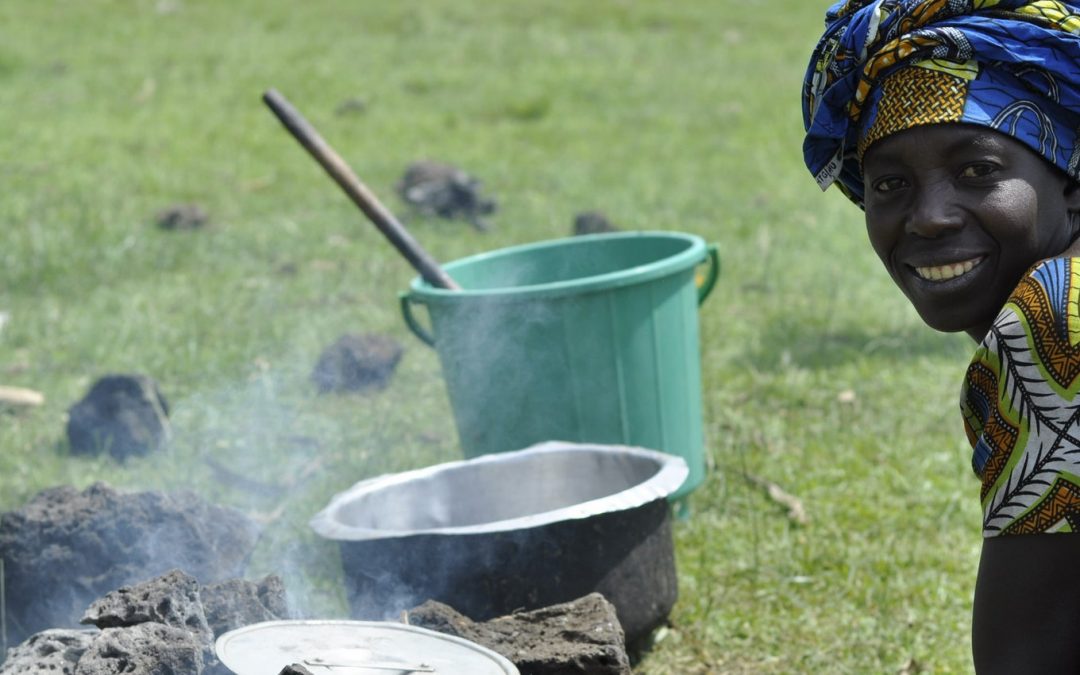Sexual and gender-based violence (SGBV), one of the most terrible consequences of conflict, is also one that often goes underreported – and therefore unaddressed – because of cultural taboos that silence its victims. Now, UNHCR is fighting the issue upfront with a range of innovative, scalable and community-based programs that are changing the way different units can collaborate with each other.
Since 2013, the agency has been exploring innovative solutions to SGBV thanks to funding from the U.S. Bureau of Population, Refugees and Migration (BPRM). Senior Protection Officers have been deployed on the ground and a range of programs such as refugee trade cooperatives and female-only internet cafés have been rolled out in different operations. In 2014, UNHCR launched a unique collaboration between the Protection/SGBV Unit, the Energy and Environment Unit and UNHCR Innovation to crowdsource community-based solutions to fight SGBV. Together, these units have worked on addressing fuel and energy poverty – two sources of conflict that also lead to environmental degradation, and disproportionately affect women and girls.
“It’s all about protection, from the physical side and the financial side,” says Paul McCallion, Renewable Energy Officer at the Energy Unit. “We’re trying to reduce the risk exposure, whether it’s the collection of firewood, finding a less expensive way to charge solar lanterns, or helping people reduce their dependence on unhealthy fuels like kerosene.”
Crowdsourcing innovation
During eight weeks in 2014, UNHCR Innovation invited its staff and implementing partners to submit concept notes on UNHCR Ideas, the agency’s online idea management platform. Nii Ako Sowa, Public Information Associate in Ghana, proposed a project based on the production and use of biomass briquettes, which are made out of biodegradable materials and used as low-emission cooking or heating fuel. His concept was enhanced by the input of other Ideas participants, who suggested connecting the briquettes project with the promotion of clean cookstoves, and ended up as the first runner-up in the Challenge.
“One refugee told me this is the kind of project they want to see,” recalls Nii Ako, who is now in charge of rolling out the project in Ghana. “Because they feel they will gain skills that will make them more marketable upon their return to their countries.”
Opening up to the private sector
SAFE from the start has been particularly successful in Uganda, where it has been implemented in the Nakivale refugee settlement, and is now being replicated in Kyaka II. In Nakivale, UNHCR has partnered with a local business to run the briquette-making operation, employing both refugees and Ugandan nationals. And women groups have been set up to sell the briquettes on the local market, in partnership with a microfinance company.
Andrew Mbogori, Head of Office of the Sub-office in Mbarara, Uganda, says partnering with the local briquette company required building trust on both sides, because the private sector has traditionally been left out of humanitarian operations in the settlements. The partnership seems to be paying off; by February of this year, UNHCR had distributed about 300 tons of sustainable briquettes to refugees, and another 50 tons were sold by women groups. The goal is to meet 25% of energy needs in Uganda’s settlements through briquettes. “This has accrued double results of assisting in conserving the environment and improving family incomes for refugee women.” Mbogori says.
Scaling up
Now, the Uganda operation is scaling up the project to install streetlights to enhance security in certain parts of the settlement and provide an additional source of power through solar energy.
Various other briquettes and streetlights programs are being replicated in other countries, included Cameroon and Ghana, where the idea was initiated. The challenge for UNHCR will be to adapt these programs to the local context. “What we’re hoping to formulate is lessons learned, success stories or failure stories. The briquettes project could be applied to different countries depending on vegetation and the topography. What works in Ghana many not in any way remotely be useful in Chad.” says Paul McCallion. “The learning in the course of that process is immense.”
Photo Credit: © UNHCR/Lucy Beck
We’re always looking for great stories, ideas, and opinions on innovations that are led by or create impact for refugees. If you have one to share with us send us an email at [email protected]
If you’d like to repost this article on your website, please see our reposting policy.

